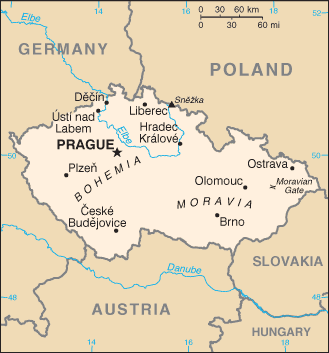We visited the Czeck Republic while living in Poland.

Nestled in the heart of Europe, the Czech Republic is a land brimming with culture, history, and fairy-tale architecture. From the cobblestone streets of Prague to the picturesque towns dotting its countryside, this nation captivates travelers with its blend of past and present, tradition and innovation. The Czech Republic is a landlocked country in Central Europe. The country is bordered by Germany to the west, Austria to the south, Slovakia to the east and Poland to the north. Its capital and largest city, with 1.3 million inhabitants, is Prague. The Czech Republic includes the historical territories of Bohemia and Moravia, as well as a small part of Silesia.
The Czech Republic's story is as compelling as it is complex. Born from the rich legacies of Bohemia, Moravia, and Silesia, the country has been a significant crossroads for various empires and cultures. Its history spans a millennium, from the Great Moravian Empire through the Bohemian Kingdom, to its modern formation after the Velvet Revolution in 1989. The resilience and spirit of the Czech people echo through the centuries, as they've shaped a nation proud of its heritage and optimistic about its future.
Prague, the capital, is a city that needs no introduction. Its storied streets tell tales of emperors, artists, and revolutionaries. The Prague Castle complex, the Charles Bridge, and the Old Town Square with its Astronomical Clock are just a few of the must-visit landmarks that make Prague a top destination for history buffs and romantics alike.
Journey to Český Krumlov to witness a Renaissance town frozen in time. Its UNESCO-listed center, crowned by a stunning castle, offers a labyrinth of lanes where every turn brings a new discovery.
For those seeking relaxation, the spa town of Karlovy Vary provides an oasis of tranquility. Known for its healing thermal springs and grand colonnades, this town is a haven for wellness and architecture enthusiasts.
Brno, the Czech Republic's second-largest city, is a confluence of modernity and history. With its burgeoning tech scene, vibrant cultural life, and landmarks like the medieval Špilberk Castle and the avant-garde Villa Tugendhat, Brno is a testament to the country's dynamic spirit.
But there's more to the Czech Republic than these famous spots. Discover the wine regions of Moravia, the Gothic grace of Kutná Hora, and the battle-scarred fortresses that have withstood the tests of time.
As you plan your visit to this enchanting country, let travel.frogsfolly.com be your guide to the hidden alleys, the sweeping landscapes, and the stories waiting to be told. The Czech Republic is not just a destination; it's a journey through the annals of Europe, a mosaic of experiences waiting for you to piece together. Join us in uncovering the Czech Republic – a nation where history whispers from every corner and beauty is eternally etched into its streets.